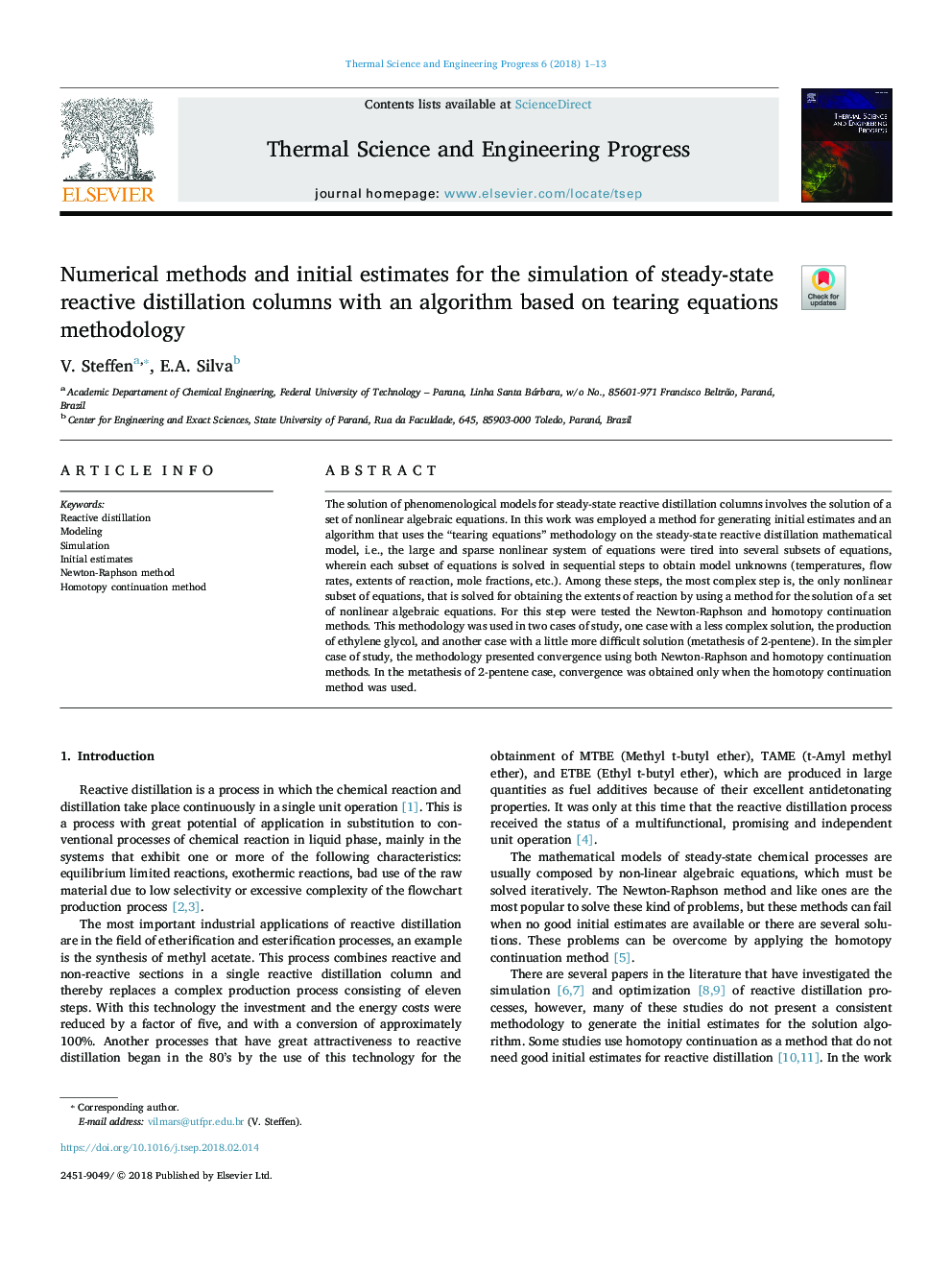| Article ID | Journal | Published Year | Pages | File Type |
|---|---|---|---|---|
| 8918715 | Thermal Science and Engineering Progress | 2018 | 13 Pages |
Abstract
The solution of phenomenological models for steady-state reactive distillation columns involves the solution of a set of nonlinear algebraic equations. In this work was employed a method for generating initial estimates and an algorithm that uses the “tearing equations” methodology on the steady-state reactive distillation mathematical model, i.e., the large and sparse nonlinear system of equations were tired into several subsets of equations, wherein each subset of equations is solved in sequential steps to obtain model unknowns (temperatures, flow rates, extents of reaction, mole fractions, etc.). Among these steps, the most complex step is, the only nonlinear subset of equations, that is solved for obtaining the extents of reaction by using a method for the solution of a set of nonlinear algebraic equations. For this step were tested the Newton-Raphson and homotopy continuation methods. This methodology was used in two cases of study, one case with a less complex solution, the production of ethylene glycol, and another case with a little more difficult solution (metathesis of 2-pentene). In the simpler case of study, the methodology presented convergence using both Newton-Raphson and homotopy continuation methods. In the metathesis of 2-pentene case, convergence was obtained only when the homotopy continuation method was used.
Keywords
Related Topics
Physical Sciences and Engineering
Energy
Energy Engineering and Power Technology
Authors
V. Steffen, E.A. Silva,
